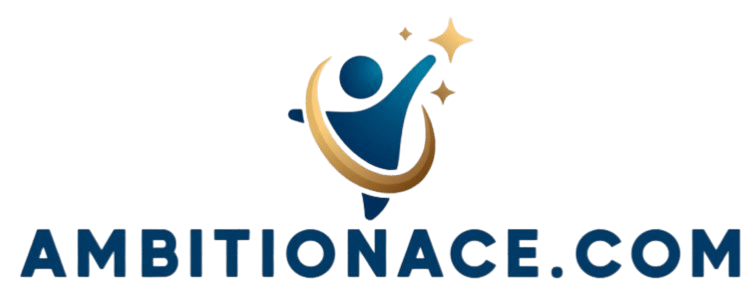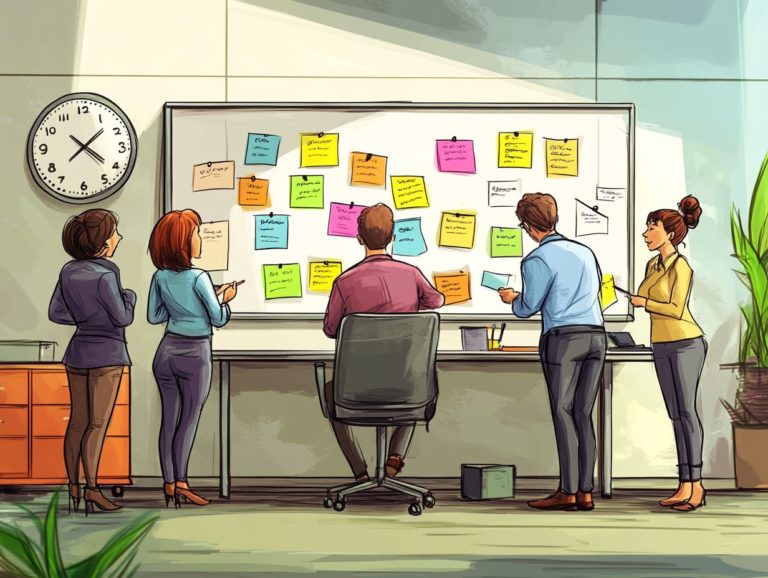Using Technology for Task Prioritization
In a world brimming with competing demands and ever-growing to-do lists, mastering the art of task prioritization has never been more essential.
This article delves into the myriad benefits of effectively prioritizing your tasks, from boosting productivity to alleviating stress. You ll find an examination of traditional methods, weighing their pros and cons, before we plunge into the realm of technology tools crafted to elevate your prioritization efforts.
With practical tips and strategies at your fingertips, you ll discover how to choose the right tools and navigate common challenges, empowering you to maintain focus and efficiency in your daily life.
Contents
- Key Takeaways:
- The Importance of Task Prioritization
- Traditional Methods of Task Prioritization
- Technology Tools for Task Prioritization
- How to Choose the Right Tool for You
- Using Technology for Effective Task Prioritization
- Common Challenges and How to Overcome Them
- Frequently Asked Questions
- What is task prioritization and why is it important?
- How can technology help with task prioritization?
- What are some popular task prioritization tools available?
- How can I use technology to prioritize tasks as a team?
- Are there any drawbacks to relying on technology for task prioritization?
- Can technology completely automate task prioritization for me?
Key Takeaways:

- Prioritizing tasks is essential for maximizing productivity and achieving goals.
- Traditional methods have their advantages and drawbacks, but technology tools offer advanced features and capabilities for efficient task prioritization.
- Think about what you need, how much you can spend, and how easy it is to use when choosing a technology tool for task prioritization.
The Importance of Task Prioritization
Task prioritization stands as a cornerstone of effective task management, particularly in complex environments such as healthcare.
Your ability to make swift decisions can significantly impact organizational productivity and performance.
Categorize tasks based on how soon something needs to be done and their importance. This helps streamline workflows, allocate resources more efficiently, and elevate your productivity to new heights.
In an era where AI-driven tools and automation are becoming critical, honing in on task prioritization not only enhances user engagement but also maximizes task efficiency.
This approach paves the way for innovative solutions that refine overall operational procedures.
Benefits of Prioritizing Tasks
Prioritizing your tasks offers a wealth of benefits that can significantly enhance your efficiency and time management.
This paves the way for smoother workflows and improved outcomes.
By adopting effective task prioritization strategies, you can navigate your workload with greater agility. Ensure that those user-visible projects receive the attention they truly deserve.
This method not only streamlines your operations but also reduces the likelihood of interruptions. You’ll be able to concentrate on what really matters.
When you incorporate adaptive systems, or systems that can change based on current needs, into your prioritization process, you cultivate a more responsive environment.
This ultimately leads to enhanced operational effectiveness. As a result, you’ll find yourself enjoying a more organized day, fostering productivity, and minimizing stress. This positively influences both your personal and professional life.
Traditional Methods of Task Prioritization
Traditional methods of task prioritization have been embraced across diverse industries. They highlight structured approaches to task management that rely heavily on communication skills, historical data, and thorough task evaluations.
You might be familiar with techniques such as the Eisenhower Matrix, ABC prioritization, and the MoSCoW method. These enable organizations to categorize tasks systematically based on urgency and importance.
While these strategies are effective, they can occasionally falter when it comes to integrating complex data and adapting to the fast-paced demands of today s workflows.
Pros and Cons of Traditional Methods
Exploring the pros and cons of traditional task prioritization methods presents a nuanced picture. Effectiveness often finds itself at odds with the complexities of today’s work environments.
On one hand, these time-tested approaches can streamline your task evaluation process. They enhance engagement by offering a clear framework for organizing your workload.
This clarity gives you the power to concentrate on what truly matters, ultimately boosting your productivity.
However, as work dynamics continue to evolve, these methods can start to feel cumbersome. This may lead to performance issues and even burnout.
Their rigid structures may not accommodate the fluidity of tasks and responsibilities. This can leave team members frustrated as they attempt to adapt to shifting demands.
Traditional prioritization strategies have advantages, but it’s crucial to adapt them to modern practices to maximize their effectiveness.
Technology Tools for Task Prioritization

Today, technology tools are changing how we prioritize tasks. With AI and automation, you can work more efficiently and streamline your workflow.
These platforms empower you to integrate complex data effortlessly, enabling real-time task analysis and performance tracking. By leveraging software tailored for task prioritization, your teams can significantly elevate their planning skills and task performance, allowing for swift adaptations to changing demands.
Overview of Available Tools
When exploring the array of tools for task prioritization, you’ll find that AI-based options have gained considerable traction. These sophisticated tools offer seamless software integration and user-friendly features that elevate your task management experience.
You ll discover a wealth of functionalities, such as customizable dashboards, intuitive drag-and-drop interfaces, and advanced notification systems that ensure you’re always aware of deadlines and upcoming tasks. Many of these platforms effortlessly work together with your existing productivity software, allowing you and your team to adopt them seamlessly in your workflows.
What s particularly impressive is that some tools use machine learning algorithms, which are systems that learn from past data to improve future task predictions. These tools analyze past performance, helping you forecast task completion times and ensuring your priorities align with your strategic objectives. Whether you’re working solo or collaborating with a team, these solutions are designed to streamline your processes and enhance your overall efficiency.
Features and Capabilities of Each Tool
Each task management tool offers distinct features and capabilities that can significantly enhance your task efficiency and performance. Understanding what each option provides is key to maximizing your productivity.
By exploring various tools, you can uncover automation capabilities that reduce repetitive work and streamline your processes. For example, some tools automatically assign tasks based on team members’ workloads, ensuring that responsibilities are distributed fairly without the need for manual input.
Performance metrics, such as completion rates and time tracking, foster accountability and offer valuable insights into areas that may require improvement. Ultimately, selecting the right task prioritization tool is crucial for aligning with both your individual and organizational needs, as these solutions can profoundly affect your productivity levels and the overall success of your projects.
How to Choose the Right Tool for You
Choosing the right task prioritization tool can supercharge your productivity and transform your work experience! You ll want to consider several key factors that will guide you toward effective decision-making.
Factors to Consider
When selecting the ideal task prioritization tool, several key factors warrant your attention, including user engagement, software integration capabilities, and anticipated performance outcomes.
It’s important to consider more than just the basics. You must also evaluate how well the tool adapts to your team’s workflows. It should enhance collaboration among team members and enable seamless communication about project updates.
Tracking performance metrics is essential, as it allows your team to analyze productivity and pinpoint bottlenecks with precision. A user-friendly interface can significantly boost engagement, ensuring every team member feels comfortable and confident using the tool.
Finally, having options for customization gives your team the power to tailor the prioritization process to meet your unique needs and objectives, cultivating a more dynamic and responsive work environment.
Using Technology for Effective Task Prioritization

By leveraging technology for effective task prioritization, you can significantly boost your task efficiency and user engagement. This approach offers innovative solutions that seamlessly adapt to the complexities of today s dynamic work environments.
Tips and Strategies for Maximizing Productivity
Maximizing your productivity through effective task prioritization involves implementing strategic tips and leveraging automation tools that enhance your time management and optimize your workflow.
Use technology to streamline your daily routines. This ensures that your most critical tasks receive the attention they deserve.
For example, using digital task management applications allows you to create easily manageable to-do lists, categorize tasks based on urgency, and set achievable deadlines.
Employ reminders and notifications to stay on track. Integrating automation tools can significantly reduce the burden of repetitive work.
Utilizing the analytics features in these applications enables continuous improvement by highlighting your productivity patterns, giving you the power to refine your prioritization strategies effectively.
Common Challenges and How to Overcome Them
Despite the advantages that come with task prioritization, you often encounter common challenges like task interruptions, performance metrics, and the details of managing complex data, all of which can significantly impede productivity across various fields.
Dealing with Distractions and Overwhelm
Navigating distractions and the chaos of task prioritization requires a keen understanding of what pulls you away from your focus. Discover effective strategies to boost your performance and engage users meaningfully.
Identifying your distraction triggers is essential. Whether it s incessant social media notifications or surrounding clutter, recognizing these culprits enables you to craft an environment that fosters concentration.
Implementing techniques like the Pomodoro Technique, which breaks work into 25-minute intervals followed by short breaks, can transform your workflow, diminishing feelings of overwhelm.
Sharpening your communication skills is equally important for delegating tasks effectively and collaborating with others. This ensures everyone is on the same page regarding objectives.
By cultivating decision-making processes that prioritize tasks, you not only address what s urgent but also develop long-term productivity habits. This sets you up for more efficient responses to whatever challenges arise.
Frequently Asked Questions
What is task prioritization and why is it important?

Task prioritization is the process of determining which tasks should be completed first based on their level of importance and urgency. It is important because it helps people stay organized, manage their time effectively, and make sure you tackle your most important tasks on time!
How can technology help with task prioritization?
Technology offers a variety of tools to assist with task prioritization, such as task management apps, calendars, and to-do lists. These tools can help individuals create and organize their tasks, set deadlines, and even send reminders to ensure that important tasks are not forgotten.
What are some popular task prioritization tools available?
Some popular task prioritization tools include Trello, Asana, Todoist, and Google Calendar. These tools offer different features and interfaces, so it is important to find the one that best fits your needs and preferences.
How can I use technology to prioritize tasks as a team?
Collaborative tools like Slack and Microsoft Teams can be used to assign tasks to team members, set deadlines, and track progress. These tools also allow for communication and collaboration among team members, making it easier to prioritize tasks together.
Are there any drawbacks to relying on technology for task prioritization?
While technology can be a helpful tool, it is important to remember that it is still just a tool and should not be relied on completely. Use your own judgment to prioritize tasks based on what you know is important.
Can technology completely automate task prioritization for me?
While technology can assist with task prioritization, it cannot completely automate it. It is still important for individuals to take an active role in determining which tasks are most important and ensuring they are completed in a timely manner.






